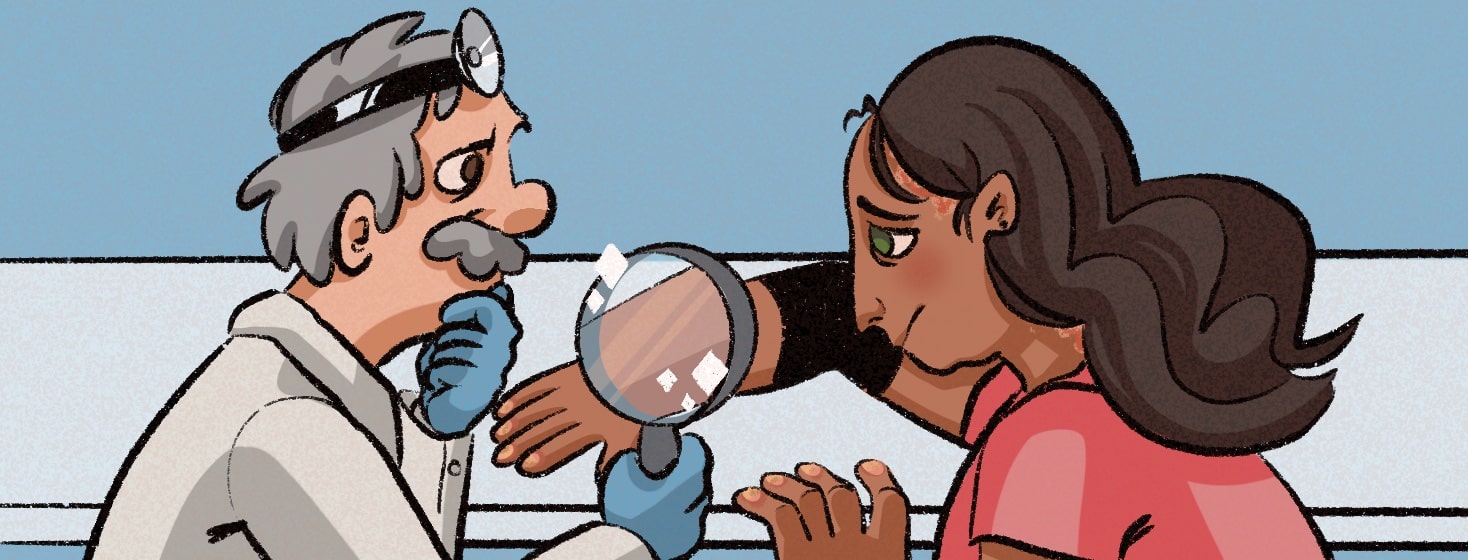Community Views: Psoriatic Arthritis Without Psoriasis
For most people, psoriasis is sometimes the first symptom of psoriatic arthritis (PsA). Psoriasis causes itchy, scaly rashes on the skin. Joint pain and swelling usually follow this rash. But not everyone with PsA develops psoriasis.1,2
What do real psoriatic arthritis patients have to say?
To learn from those who have PsA without psoriasis, we turned to Facebook. We asked the community, “Do you live with PsA without psoriasis? Share your diagnosis story.”
Close to 100 people responded with their unique diagnosis stories. A common theme was that having PsA without psoriasis delayed their diagnosis. Here is what they shared.
PsA without psoriasis can delay an accurate diagnosis
PsA and psoriasis often coexist. For this reason, doctors may use visible psoriasis as a way to reach a PsA diagnosis.1,2
Featured Forum
View all responsesBut not everyone will have psoriasis. This can delay an accurate diagnosis. Many people may go years without getting clear answers.1
- “I have no psoriasis. It took many years and visits to my doctor to get a diagnosis.”
- “I have PsA without psoriasis. I was finally diagnosed 2 years ago after arguing with my doctor, who told me that with the joint pain, foot pain, fatigue, brain fog, etc., I just needed to lose weight. I went to a new rheumatologist, and she confirmed the PsA.”
- “I don't have much psoriasis at all, and when I started aching everywhere, I researched it and told my doctor that I think I have psoriatic arthritis. He said, ‘No way, your psoriasis isn't advanced enough.’ This obviously delayed my diagnosis by some time. I refuse to see that doctor now.”
- “I don’t have psoriasis, but I have psoriatic arthritis. It took a long time to figure out what was wrong with me, but [neither] my doctor nor my husband would give up until I was diagnosed. I guess if you have to have this disease, it is a blessing not having the skin issues.”
- “It took a lifetime literally to get a diagnosis. I would tell doctors that everything hurt and I was so tired I couldn’t get much done. Finally, in my late 40s, a doctor listened and sent me to a rheumatologist. I was finally diagnosed around 15 years ago.”
Many people with PsA have only nail psoriasis.
Many people responded that they have nail psoriasis but do not have skin psoriasis anywhere else on their bodies. Nail psoriasis, which causes discoloration, nail pitting, and thin, crumbling nails, is a common symptom of PsA. A physical exam of the nails can confirm nail psoriasis, which may help in getting a PsA diagnosis.2,3
- “I’ve never had psoriasis. I occasionally have to peel the skin on my fingertips. I also developed ridges and some pits on my nails.”
- “My rheumatologist had previously diagnosed me with osteoarthritis and fibromyalgia. At one appointment, he looked at my wavy fingernails and asked me about my toenails. I told him that they were wavy, too and that I have had several ingrown toenail surgeries. He then looked at my skin and asked if I had psoriatic lesions. I told him no, and he said the first patient that he diagnosed with psoriatic arthritis took 23 years to develop a lesion. So I have psoriatic arthritis and no lesions.”
- “I have a little pitting on maybe 2 nails, but that’s it.”
- “I have ridges and pitting in my fingernails, and my toenails are in bad shape.”
- “I already had an ankylosing spondylitis diagnosis for about 8 years. Finally saw a good rheumatologist who looked at my nails. I have had ridges, bumps, and pits on only my thumbs for about 20 years. He looked at them and said, ‘Oh yes . . . you have psoriatic arthritis as well.’ I have never had one patch of skin issues. He also said that he couldn't believe I was walking around in all that pain.”
Even without psoriasis, PsA causes other painful symptoms
Skin psoriasis causes itching, burning, and sensitive skin. But other PsA symptoms can greatly affect your quality of life as well.
- “I have very little psoriasis, but plenty of body aches and pains . . . oh, and fatigue!”
- “My joint pain is horrendous!”
- “I do not have psoriasis, but I do suffer constant dermatitis.”
- “No psoriasis, just a lot of pain.”
For some, psoriasis is ignored or dismissed as something else
Psoriasis can affect one area or multiple areas of the body at a time. It can also be so small that it is easily ignored or dismissed as something else.
- “I had a small amount of psoriasis on one knee as a teenager but also on my scalp. My mum thought I had really bad dandruff. I only have it in small patches on my scalp now. I was diagnosed with PsA when I was 28, and I’m now almost 60.”
- “Three years ago, I was diagnosed with PSA, having had mild psoriasis in my younger days.”
Sometimes, psoriasis comes and goes in varying degrees.
- “I was diagnosed with PsA without psoriasis in my 30s. But [I] started to get scalp psoriasis in my 40s.”
- “I had some red itchy patches on my hands. After a while, the patches went away. I haven’t seen them in 30 years.”
Start a Forum
Everyone’s PsA journey is unique.
Thank you to everyone who shared their diagnosis stories. If your doctor is not listening or not taking your concerns and symptoms seriously, get a second (or third!) opinion. Remember to advocate for yourself. You know your body better than anyone else.
This or That
Do you also find it painful to sit for extended periods of time?

Join the conversation